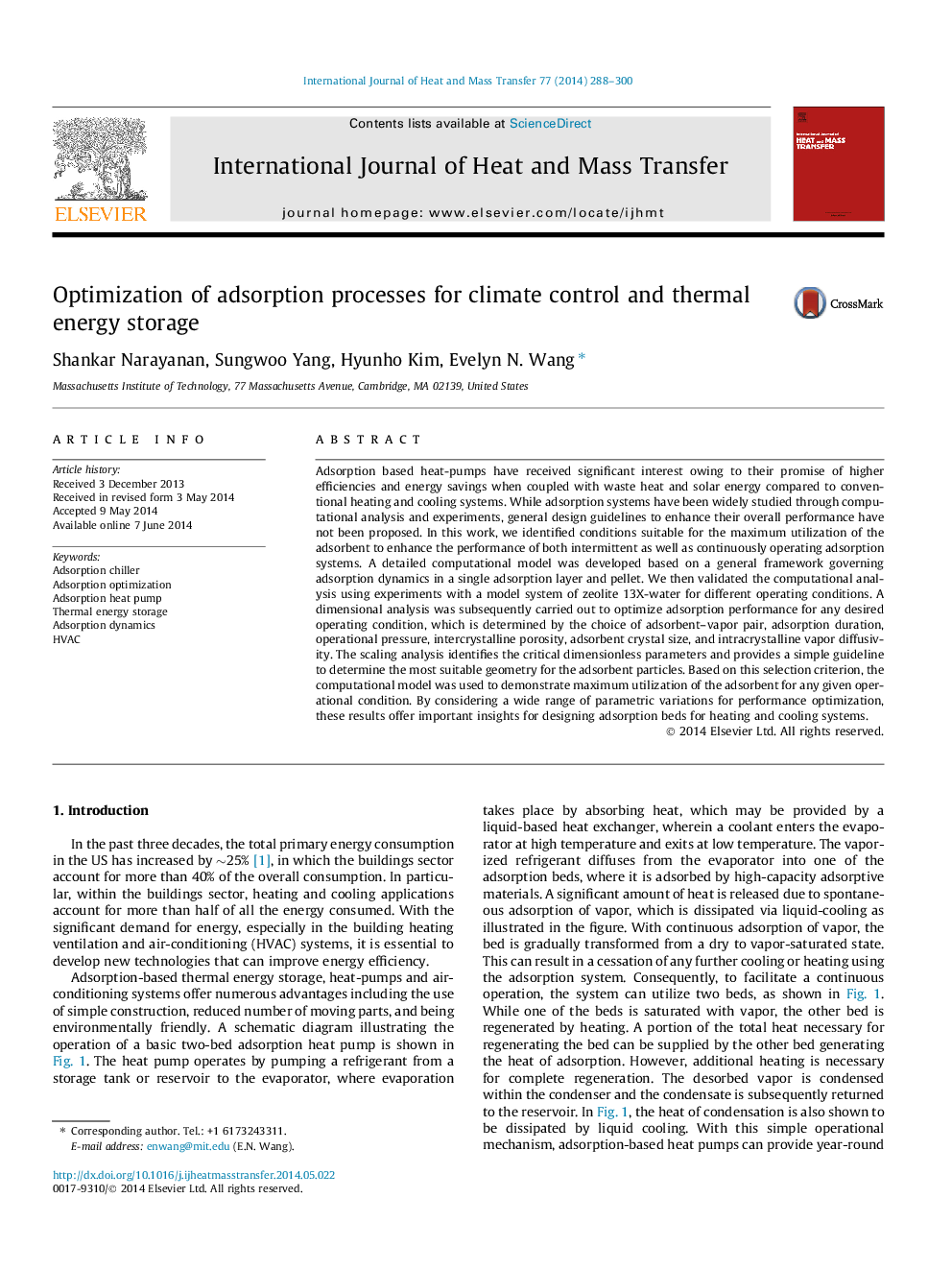| Article ID | Journal | Published Year | Pages | File Type |
|---|---|---|---|---|
| 657792 | International Journal of Heat and Mass Transfer | 2014 | 13 Pages |
Adsorption based heat-pumps have received significant interest owing to their promise of higher efficiencies and energy savings when coupled with waste heat and solar energy compared to conventional heating and cooling systems. While adsorption systems have been widely studied through computational analysis and experiments, general design guidelines to enhance their overall performance have not been proposed. In this work, we identified conditions suitable for the maximum utilization of the adsorbent to enhance the performance of both intermittent as well as continuously operating adsorption systems. A detailed computational model was developed based on a general framework governing adsorption dynamics in a single adsorption layer and pellet. We then validated the computational analysis using experiments with a model system of zeolite 13X-water for different operating conditions. A dimensional analysis was subsequently carried out to optimize adsorption performance for any desired operating condition, which is determined by the choice of adsorbent–vapor pair, adsorption duration, operational pressure, intercrystalline porosity, adsorbent crystal size, and intracrystalline vapor diffusivity. The scaling analysis identifies the critical dimensionless parameters and provides a simple guideline to determine the most suitable geometry for the adsorbent particles. Based on this selection criterion, the computational model was used to demonstrate maximum utilization of the adsorbent for any given operational condition. By considering a wide range of parametric variations for performance optimization, these results offer important insights for designing adsorption beds for heating and cooling systems.
